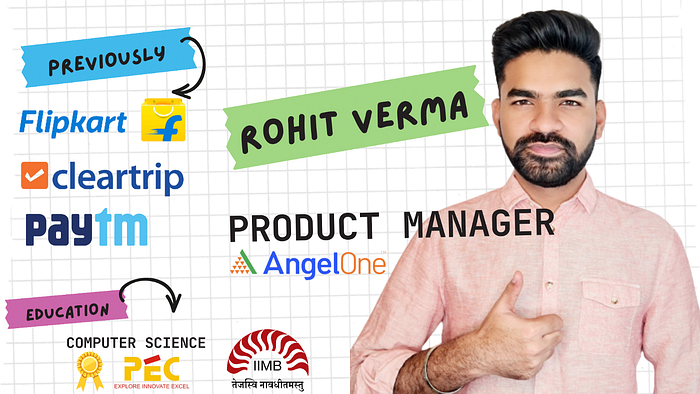
Unraveling McKinsey’s Approach: A Guide to Problem-Solving for Product Managers
Have you ever wondered how the world’s most successful product managers consistently deliver solutions that not only meet but exceed expectations? The secret might just lie in a methodology honed by one of the most prestigious consulting firms in the world: McKinsey & Company. This article delves into McKinsey’s problem-solving process, tailored specifically for product managers looking to elevate their game.
The McKinsey Method: A Beacon in the Product Management Storm
In the dynamic and often tumultuous world of product management, having a structured approach to problem-solving is not just beneficial; it’s essential. McKinsey’s method offers a beacon of clarity and direction. But what makes it so effective?
1. Defining the Problem Clearly
The McKinsey Way: Start with a clear, concise problem statement. This might seem obvious, but it’s often overlooked. A well-defined problem is halfway to being solved.
Practical Application: As a product manager, when faced with a challenge, resist the urge to jump into solution mode. Instead, spend time articulating the problem. For instance, if your product’s user engagement is declining, define whether the issue is with a specific feature, user interface, or perhaps an external factor like increased competition.
2. Breaking Down the Problem
The McKinsey Way: Use a top-down approach. Break the problem into smaller, more manageable parts. This is known as the MECE principle (Mutually Exclusive, Collectively Exhaustive).
Practical Application: If the problem is declining user engagement, break it down into categories like user demographics, features used, time spent on the app, etc. This approach helps in identifying specific areas that need attention.
3. Prioritizing Issues
The McKinsey Way: Not all problems are created equal. Prioritize issues based on their impact and the effort required to address them.
Practical Application: Use tools like the Eisenhower Matrix to categorize issues into ‘urgent and important’, ‘important but not urgent’, and so on. This helps in focusing on what can drive the most significant impact.
4. Developing Hypotheses
The McKinsey Way: Based on the problem breakdown, develop hypotheses about what might be causing the issues.
Practical Application: If users are not engaging with a new feature, hypothesize why. Is it not meeting user needs? Is it too complex? Test these hypotheses through surveys, A/B testing, or user interviews.
5. Testing and Analyzing
The McKinsey Way: Rigorously test these hypotheses with data and analysis. McKinsey’s approach is heavily data-driven.
Practical Application: Gather data that supports or refutes your hypotheses. Use analytics tools to understand user behavior, conduct qualitative research, and gather feedback.
6. Synthesizing Findings
The McKinsey Way: Bring together all the insights from your analysis to form a coherent narrative. What story does the data tell?
Practical Application: Combine quantitative data with qualitative insights to get a full picture. Perhaps the data shows that younger users are less engaged with the new feature, and user interviews reveal that they find it redundant.
7. Developing Solutions
The McKinsey Way: Based on your findings, develop actionable solutions. These should be specific, measurable, achievable, relevant, and time-bound (SMART).
Practical Application: If the issue is with a feature’s complexity, a solution could be to simplify the interface. Set clear metrics for success, like an increase in daily active users or improved user satisfaction scores.
8. Implementation and Feedback Loop
The McKinsey Way: Implement solutions and establish a feedback loop. Continuous improvement is key.
Practical Application: Roll out changes in phases, monitor user feedback, and be ready to iterate. Remember, problem-solving is an ongoing process, not a one-time event.
Case Studies: McKinsey’s Method in Action
Let’s look at some real-world examples where this approach made a tangible difference:
- Revamping a Social Media App: A leading social media company used this method to identify why a new feature was underperforming. Through data analysis and user interviews, they realized the feature was not intuitive. A redesign based on these insights led to a 30% increase in feature usage.
- E-commerce Optimization: An e-commerce platform that applied the McKinsey method to address cart abandonment. By breaking down the problem, they identified key issues like lengthy checkout processes and lack of payment options. Addressing these issues led to a 20% decrease in cart abandonment rates.
Here is the mind map for the article “McKinsey’s Problem-Solving Process for Product Managers”:

As a product manager, embracing McKinsey’s problem-solving process can transform the way you tackle challenges. It’s about being structured, data-driven, and user-focused. By applying these principles, you can not only solve problems more effectively but also drive innovation and growth in your products.
Remember, the key to successful product management is not just in finding solutions but in solving the right problems. McKinsey’s method offers a roadmap to do just that. So, are you ready to tackle your product challenges the McKinsey way?
Thanks for reading! If you’ve got ideas to contribute to this conversation please comment. If you like what you read and want to see more, clap me some love! Follow me here, or connect with me on LinkedIn or Twitter.
Do check out my latest Product Management resources 👇
- 🎓 Mastering Product Sense Interviews → A Comprehensive Guide for Product Managers
https://rohitverma.gumroad.com/l/ProductSenseInterviewGuide

🧠 100 + Mind Maps for Product Managers
https://rohitverma.gumroad.com/l/MindMapsForPMs

- 100 Technology Terms PMs Need to Know 💡
https://rohitverma.gumroad.com/l/PMTechTerms

- The Ultimate List of 100+ Product Management tools 🛠https://rohitverma.gumroad.com/l/PM-tools

- The Ultimate List of Product Management Frameworks ⚙️
https://rohitverma.gumroad.com/l/PM-frameworks

- The most exhaustive OKRs notion template 📔https://rohitverma.gumroad.com/l/OKR-Template

